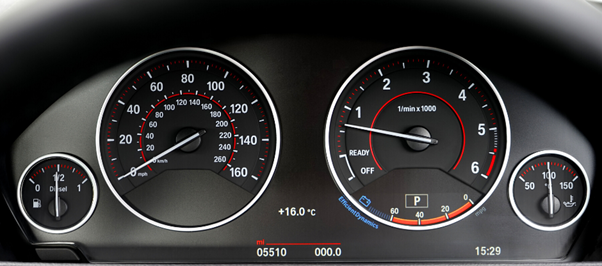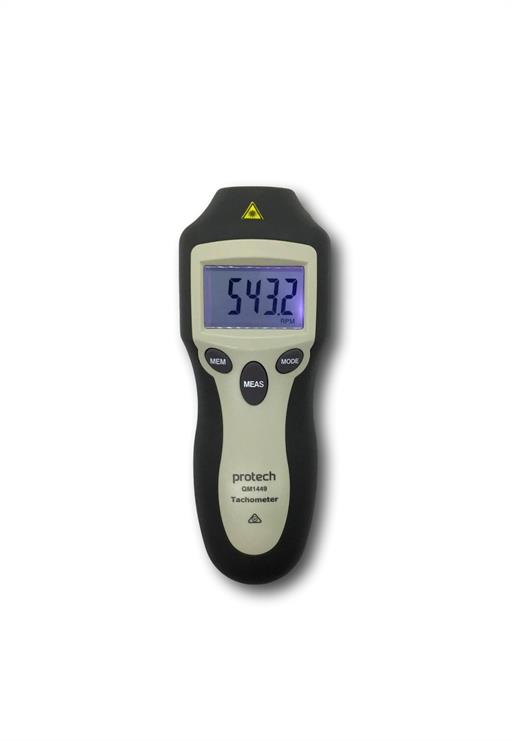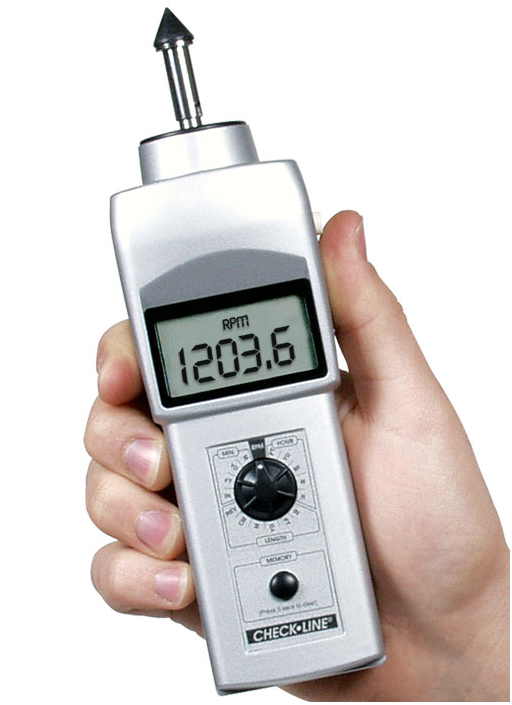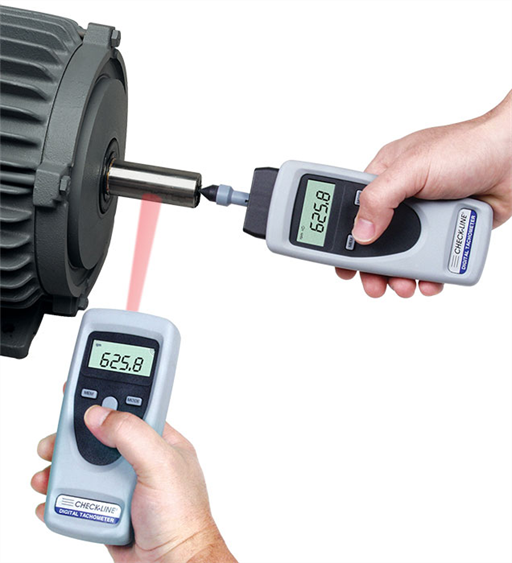What is a Digital Tachometer?

A Tachometer is a sophisticated name for a relatively commonplace device. This article focuses attention on digital tachometers, what they are, how they work, and provides common examples of their use.
About Digital Tachometers
A tachometer measures the rotational speed of a disk or shaft, such as a motor, and expresses results in revolutions per minute (RPM).
You probably encounter tachometers every day, such as in a vehicle with an analogue tachometer that displays the engine’s RPM (often located next to a speedometer).

Digital tachometers display readings on an easy-to-read LCD screen. One of the main benefits a digital tachometer has over its analogue counterparts is the ability to provide more precise and steady readings. Other significant advantages digital tachometers can have over analogue tachometers include; the ability to change units of measurement, recall last readings, and view minimum, maximum, and average measurements.
Types of Digital Tachometers
You will find two main categories of digital tachometers based on the device's measurement technique, contact and non-contact.
1. Non-Contact
Non-contact tachometers do not need to make any physical contact with a rotating shaft to obtain a measurement. These meters often employ a reflector on the shaft to be measured, and an infrared laser pointed at the rotating shaft. Each time a shaft rotates and the laser meets the reflector, light bounces back to a sensor in the tachometer. The tachometer counts each time this occurs. The meter will calculate the number of times the sensor is triggered over a given time and processes the result in revolutions per minute.
2. Contact
Contact tachometers have a freely spinning wheel that is brought into direct contact with the rotating shaft to be measured. The wheel spins freely, creating pulses that are interpreted by the tachometer and converted into RPM. Many contact tachometers also calculate and display linear speed and distance.
Uses for Digital Tachometers
Digital tachometers have an extensive range of industrial and commercial applications including;
- Modes of transport such as car, planes, trucks, tractors, trains, trams and light rail
- Industrial and farm machinery
- Manufacturing facilities, and
- Research and education.
Examples of Digital Tachometers
Non-Contact
Digital Tachometer with Memory includes Min-Max
Product Code: DT-48
Budget-friendly and straightforward to use, the DT-48 features a five-digit backlit LCD screen, integrated laser pointer, RPM, and revolution test modes, as well as a built-in sample memory recall for minimum, maximum, and last value.
Specifications
Measures: RPM
Measurement Unit: RPM
Range: 2 - 99,999 RPM
Accuracy: ±0.05% plus 1 digit
Contact
 LCD Display Contact Tachometer with 12" Circumference cable wheel
LCD Display Contact Tachometer with 12" Circumference cable wheel
Product Code: IC-DT-105A-12CBL
The IC-DT-105A-12CBL contact tachometer enables users to measure rotational and surface speed as well as length accurately. A simple-to-navigate selector switch allows you to display measured readings in a variety of engineering measurement units.
This device stores 13 readings in its memory and retains them for five minutes. Readings include; the last reading, minimum value, maximum value, and 10-recorded readings.
Specifications
Measures:RPM, surface speed and length
Measurement Unit: RPM, surface speed: inches, feet, yards, meters (per minute)and length (inches, feet, yards, centimetre, meters)
Range:0.10 to 25,000 RPM with floating decimal
Accuracy: 0.10 to 999.99 RPM: ± 0.06 RPM; 1,000.0 to 9,999.9 RPM: ± 0.6 RPM; 10,000 to 25,000 RPM: ±0.006% RPM
Contact and Non-Contact
Combination Contact and Non-Contact Digital Tachometer
Product Code: IC-CDT-2000HD
The IC-CDT-2000HD Combination Portable Tachometer combines the best features of both contact and non-contact models as it measures RPM, surface speed, and length accurately. The impressive combination of rugged construction, portability, and numerous featuresmake this unit a popular choice for maintenance personnel, machine operators, and those who work with machinery and material handling.
Specifications
Measures: RPM, surface speed and length
Measurement Unit: RPM, surface speed: inches, feet, meters (per minute)and length: inches, feet, meters
Range:Non-contact: 1.00 - 99,999 RPM, Contact: 1.00 - 19,999 RPM
Accuracy: ± 0.02% of reading or ±1 digit
Conclusion
Digital Tachometers are relatively straightforward meters that measure the rotational speed of motors and machinery.
For more information on digital tachometers, speak with an Instrument Choice Scientist! We're here to help! Call 1300 737 871 or email [email protected].
Also interesting
Home weather stations are effective instruments for capturing and sharing hyperlocal weather data. A data logger records acquired data for later analysis and graphing. Put a weather station together with a data logger and you have a real game-changer - a data logger weather station!
There are many types of data logger weather stations on the market today. These range from physical plug-in data loggers to wireless transmission loggers that send real-time information straight to your phone or computer.

A Brix Refractometer is a device used across a wide range of industries and professions. One of the most common uses of these refractometers is within the food and beverage industry and, if you work this industry, you will undoubtedly be aware of the term “Brix percentage.”
So, what are Brix Refractometers? What do they measure, and how do they work?

